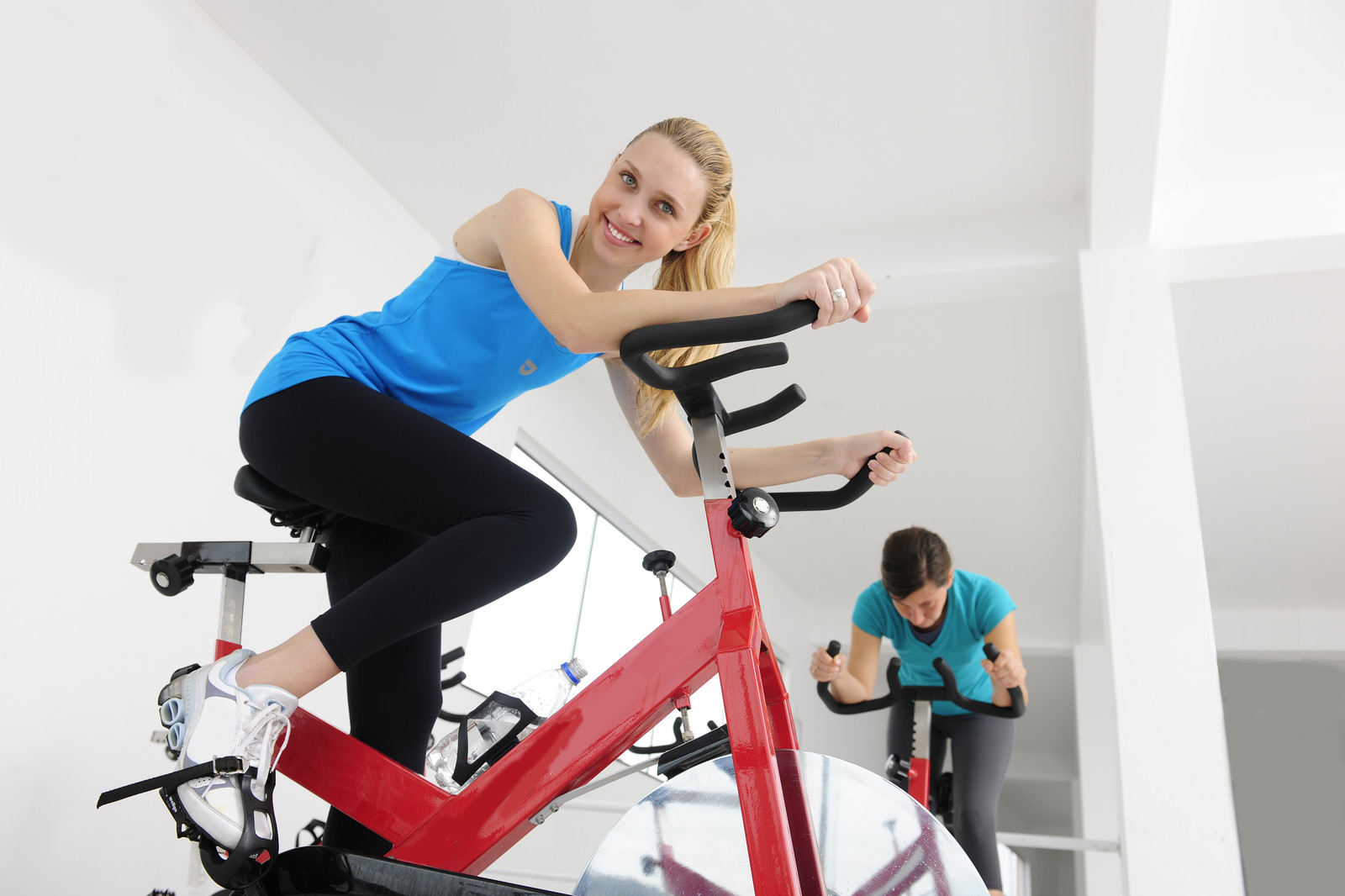 By Jeffery Scott, Schwinn Lead Master Trainer
By Jeffery Scott, Schwinn Lead Master Trainer
AFS partner Schwinn recently sat down with Jeffrey to gain insight on the indoor cycling community, talk about current trends and the future.
You have been in the industry over 20 years now, how has it changed since you got your start?
Jeffrey: The cycling category has changed a great deal over the last 20 years. Much like Step, it started out very conservative and then progressively got faster and more complicated. Choreography and experimental techniques were created to keep riders engaged, but over time, people came back to the fundamentals because of the experience and rewards.
What kind of experiments?
Jeffrey: Instead of focusing on intensity, the focus became on complexity and it became very fast with very little resistance. They have also tried to incorporate upper body exercise into the cycling choreography. Unfortunately, due to the biomechanics of cycling, it is almost impossible to do upper body workouts on a bike, and trying to incorporate ignores cycling fundamentals and doesn’t teach people to be better cyclists. 
What is your opinion on the proper way to train with indoor cycles?
Jeffrey: Cycling purists have been right all along about focusing on the fundamentals. They know what it requires to produce power and that power is the foundation of cycling. They also know cycling is a lower body sport and was never intended to be an upper body workout. My suggestion to exercisers is to always cross train. Use cycling as your cardiovascular training and always-incorporate full body weight training (off the bike!) and also flexibility training into your weekly regimen.
Are there any current trends focused on improving rider fundamentals?
Jeffrey: I see a major trend back to authentic cycling where the focus is on adding resistance and pedaling at proper and authentic RPM’s. This is where participants can actually see and feel the results of their hard work. It is coming full circle and luckily the cycling category is still very strong and members still love taking cycling classes.
Are there any specific innovations helping drive this return to authentic cycling?
Jeffrey: The biggest innovation for indoor cycling has been the addition of consoles with measurement. For years we have been riding with no feedback on how hard you were truly working (unless you were wearing your own heart rate monitor). Now, companies like Schwinn have consoles that display POWER, RPM’s, distance, etc. and we can really see what kind of power we are producing.
Leaderboards and other metrics displayed in club & studio are popping up in many venues. How has having visible rider metrics impacted indoor cycling participants?
Jeffrey: This has been a real eye opener for many participants. It has tremendously helped riders in my clubs to understand the relationship between resistance and rpm, so that they can find the right balance to create the most amount of power possible. The console doesn’t lie and when you see that high rpm ranges equate to minimal power and minimal caloric expenditure. Riders are slowing down and upping their resistance to increase their power output and increase the caloric expenditure.
Leaderboards are another level of motivation. At first, they were perceived by some as “box scores” for the class participants. But now, we’re seeing instructors using leaderboards to build community in the class, add ‘game-play’ and create an entirely new experience. Schwinn has been a leader here and their approach, working with many leader board providers, helps clubs find the right experience for their members.
 How about instructors, how have rider metrics and leaderboards impacted them?
How about instructors, how have rider metrics and leaderboards impacted them?
Jeffrey: Having a stage timer that reflects time and distance enables instructors to create intervals that focus on intensity and makes them accountable for how hard they are really working. Hitting the stage timer and seeing how far you can go in one-minutes time then repeating that with the intention to meet and beat that distance in the second one-minute interval creates excitement.
Riders are even more engaged when they can see their results and current effort displayed graphically on a group display. Classes like The PURSUIT by Equinox use fitness gamification to push riders to go harder and get a better workout than they would otherwise. There are endless ways to use measurement as motivation and that paired with the ability to track individual rider progress week to week and month to month is really a game changer for indoor cycling. Now you can lose yourself in an exciting class environment while also growing as a cyclist and seeing real fitness results. Who doesn’t want that?
Are these cycling trends limited to boutiques or are they having a larger impact?
Jeffrey: I have been seeing more gyms like Equinox overhauling their indoor cycling studios and offering things like connected cycling which before was only available in high-end boutiques. It enables any member to book a bike online and then have their stats from that cycle class uploaded into their account so they can track their progress over time. And if you belong to a gym like Equinox who has incredible group fitness programs like HIIT classes, Barre, Yoga, and Cycling you no longer need to schlep around the city to experience all these great programs.
Jeffrey Scott is an International Fitness Presenter, The Lead Master Trainer for Schwinn Indoor Cycling and the Senior National Group Fitness Manager for Cycling for Equinox Fitness Clubs. With over 20 years of experience in the Health and Fitness industry Jeffrey has conducted training workshops in over 15 countries around the world and is recognized as a top fitness educator, instructor and personal trainer who is known for his creative choreography and motivational teaching. More on Jeffrey can be found by visiting his website.


Join the Conversation!